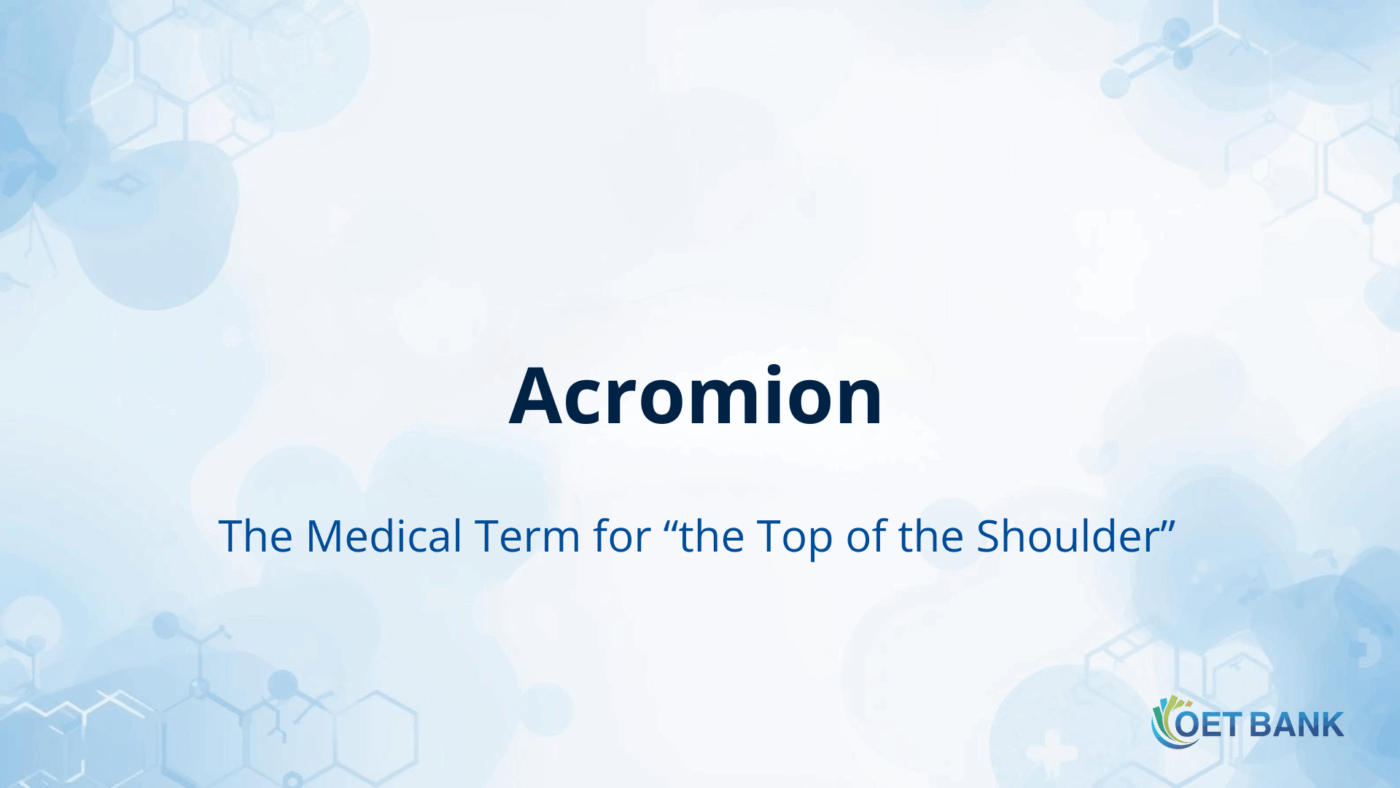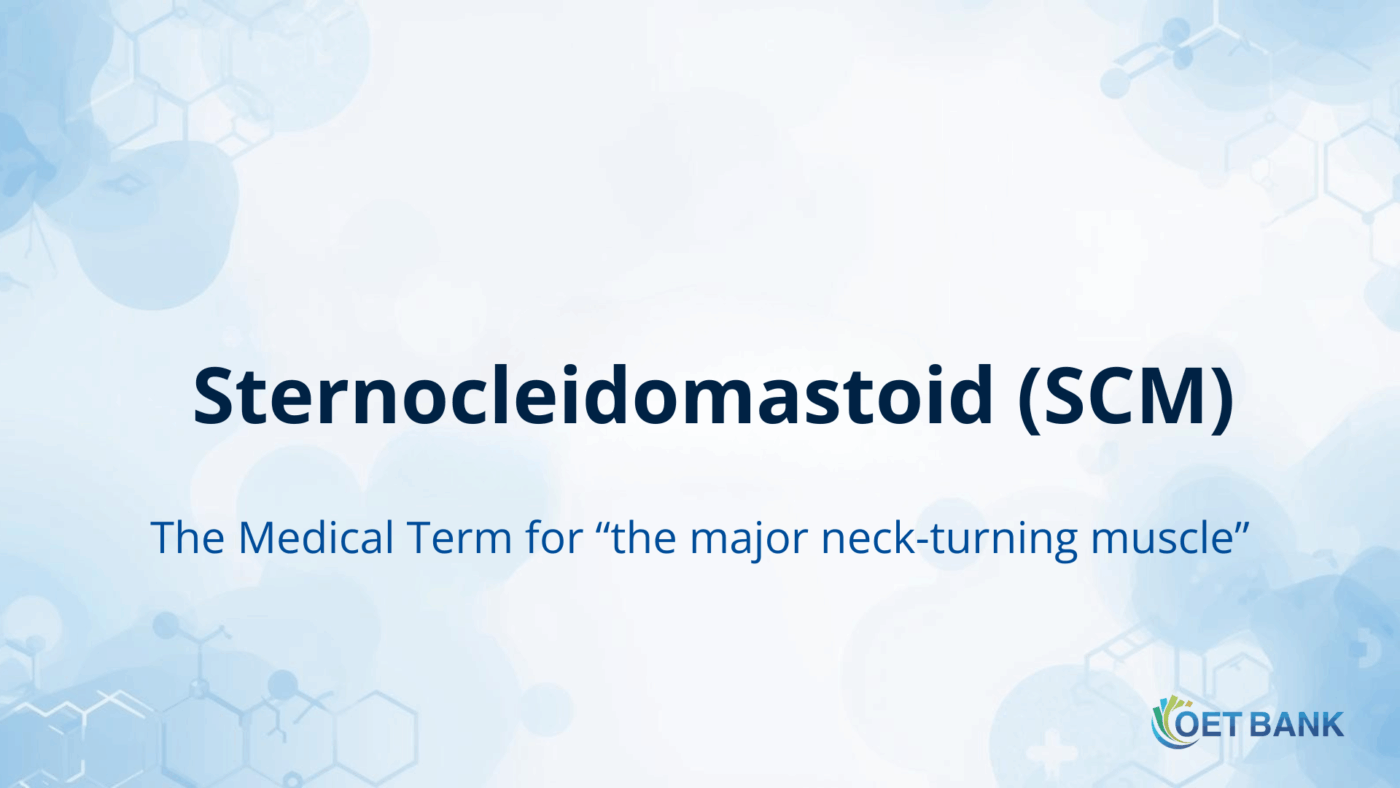👁 What Does “Chest” Mean? The word chest refers to the front part of the upper torso, covering the heart, lungs, ribs, and surrounding soft tissues. It comes from Old English roots meaning “box” or “container,” reflecting how the rib cage protects vital organs inside. In medicine, chest is used across nearly all specialties — […]
Category Archives: Word of the Day
👁 What Does “Axilla” Mean? The word axilla literally means the hollow under the arm, commonly known as the armpit. It comes from Latin, where axilla referred to the small space beneath the upper arm. In modern medicine, the term is used whenever professionals need a precise anatomical word rather than an everyday expression. Clinically, […]
👁 What Does “Acromion” Mean? The acromion is the bony projection at the top of the scapula, forming the highest point of the shoulder.The term comes from the Greek akron (meaning “tip” or “summit”) and ōmos (“shoulder”), literally describing “the tip of the shoulder.” In medicine, acromion is used in orthopedics, sports medicine, emergency care, […]
👁 What Does “Trunk” Mean? The trunk refers to the central part of the human body, excluding the head and limbs. It includes the thorax, abdomen, and pelvis — essentially everything between the neck and the hips. The word comes from Latin truncus, meaning “the main stem of a tree.” In modern medicine, trunk is […]
👁 What Does “Sternocleidomastoid” Mean? The term sternocleidomastoid literally describes its attachments: the sternum (sterno-), the clavicle (cleido-), and the mastoid process behind the ear. The word comes from a combination of Greek and Latin anatomical roots, and it is used universally in medicine, anatomy, physiotherapy, and ENT examinations. Clinicians usually refer to it in […]
👁 What Does “Laryngeal Prominence” Mean? The term laryngeal prominence refers to the visible bump on the front of the neck, commonly known as the Adam’s apple. It comes from laryngeal (meaning “of the larynx,” from Greek larynx) and prominence (meaning “something that projects outward”). This structure is formed by the thyroid cartilage — the […]
👁 What Does “Throat” Mean? The throat refers to the passage that connects the mouth and nose to the esophagus and trachea. The word comes from Old English þrote, meaning “neck” or “gullet,” and is widely used in both everyday and clinical English. Anatomically, it includes the pharynx and larynx, which play key roles in […]
👁 What Does “Mentum” Mean? Mentum refers to the lower front part of the face, commonly known as the chin. The word comes from Latin, meaning “chin” or “projection.” In anatomical terms, it’s part of the mandible (lower jawbone) and forms the prominent point of the jawline. 🔍 Clinical Usage In clinical documentation, you’ll often […]
👁 What Does “Beard” Mean? The beard refers to the hair that grows on the lower part of the face, especially on the chin, cheeks, and jawline. The word comes from the Old English beard, which has remained largely unchanged in modern usage. In medical or anatomical contexts, it’s often used to describe a region […]
👁 What Does “Jaw” Mean? The jaw refers to the bone that forms the lower part of the face and holds the lower teeth. In anatomy, it’s known as the mandible, while the upper jaw is called the maxilla. The word comes from Old English ceowan, meaning “to chew,” which perfectly describes its function. In […]
- 1
- 2











